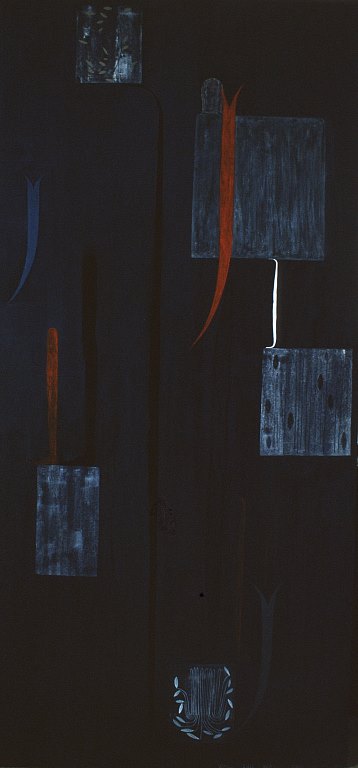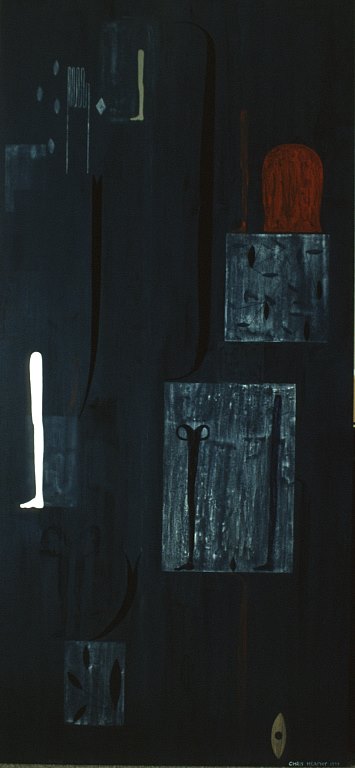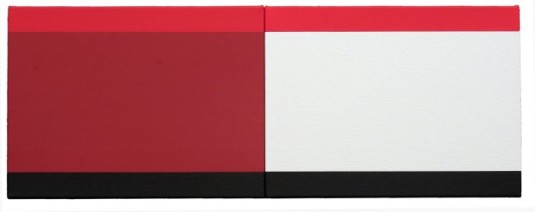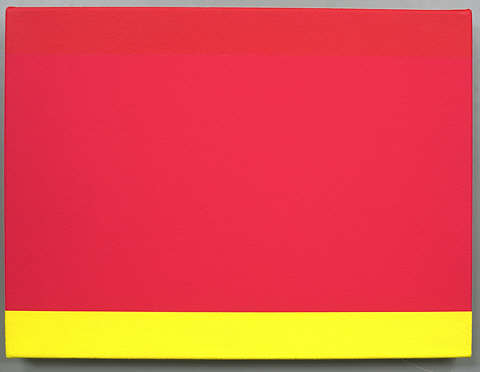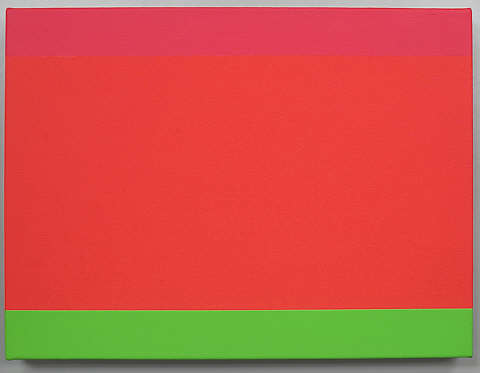Walk This Way
Walk This Way
-
Artist
-
Production Date
1997
-
Medium
acrylic on board
-
Size
1980 x 2730 mm
-
Credit
Chartwell Collection, Auckland Art Gallery Toi o Tāmaki, 1997
-
Accession Number
C1997/1/14.1-3
-
Accession Date
20 Aug 1997
-
Department
New Zealand Art
-
Classification
Painting
-
Collection
Chartwell
-
Subjects
abstraction, legs, feet, symbolism, symbols, identity
-
Description
Kei roto i ngā tohu o *Walk This Way*, 1997 he waewae e tū motuhake ana, e honotia ana ki te hope, ki te peke waihanga, ki ngā poutoko rānei. I taua wā tonu i te aro atu a Chris Heaphy ki te matakite a Tahupōtiki Wiremu Rātana, te kaihanga o te Hāhi Rātana, me tāna mahi hei tohunga – he rūma kī tonu ki ngā peke waihanga, ngā tokotoko, ngā poutoko e kore nei e hiahiatia e ngā tāngata kua whakarauorahia, e tū ana ki te taha o te whare karakia. Ko ētahi atu tohutoro ataata he tauira taimana purei-kāri he mea e hāngai ai ki te tohunga me te kaiwhakatūtū o ngā motika whenua, o Ngāi Tūhoe a Rua Kēnana me tōna hapori i te Maungapōhatu.
Ko tā tēnei toi he aro atu ki ngā tohu tūrehurehu, he mea hāngai ki ngā awa, ngā rākau, ngā puke – he āhua e hāngai ai ki te kō. Tēnā pea ko aua taputapu he pāhau Pākehā kē – he āhua e puta mai ai i ngā toi tīmatanga a Heaphy.
Among a range of figurative symbols, *Walk This Way*, 1997 includes legs, standing alone or connected with pelvic or hip bones, prosthetics or crutches. During this period, Chris Heaphy was particularly interested in the Māori prophet Tahupōtiki Wiremu Rātana, founder of the Hāhi Rātana (the Rātana church), and his work as a faith healer – a room of prosthetics, walking sticks and crutches no longer needed by those who had been healed stood nearby the church. Other visual references include the playing-card diamond design often associated with Ngāi Tūhoe prophet and land rights activist Rua Kēnana and his religious community at Maungapōhatu.
This work also draws on more abstract symbols, evocative of awa (rivers), rākau (trees), hills, and forms which suggest kō (Māori digging tools). Or, these may be the tools or the moustaches of Pākehā (European settlers) arrivals – another motif which appears in Heaphy’s early work

